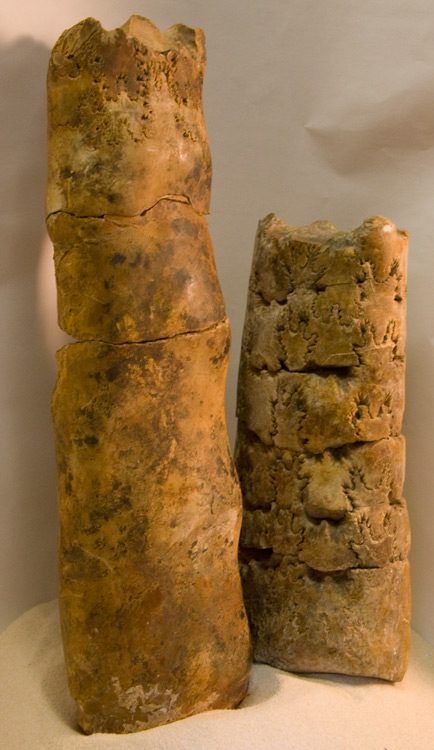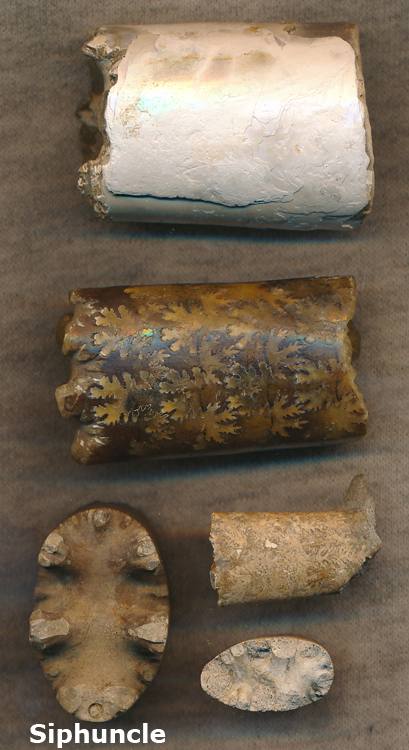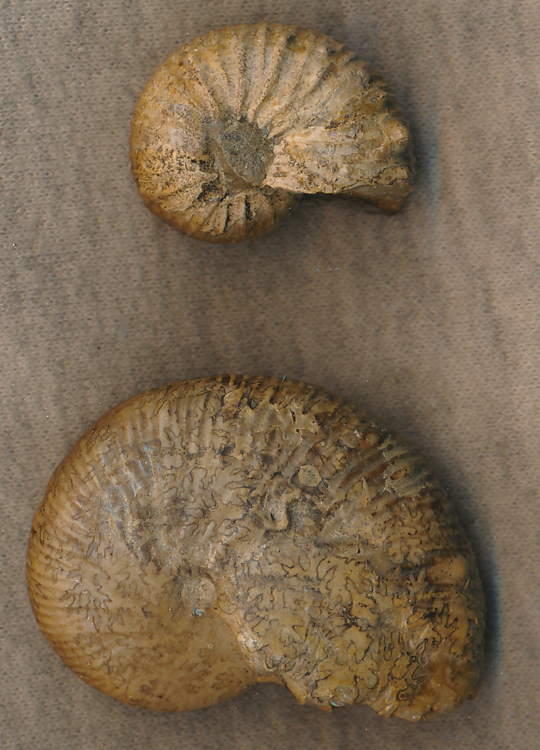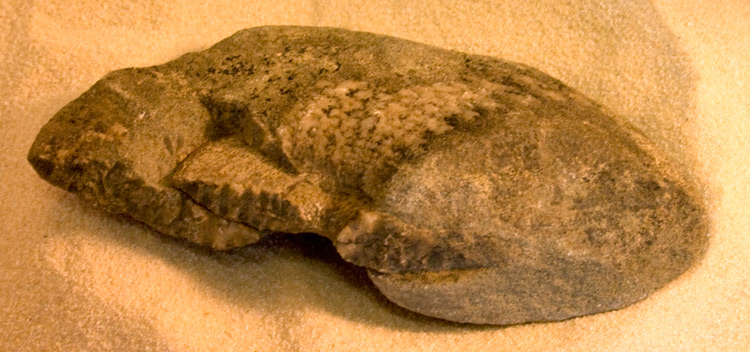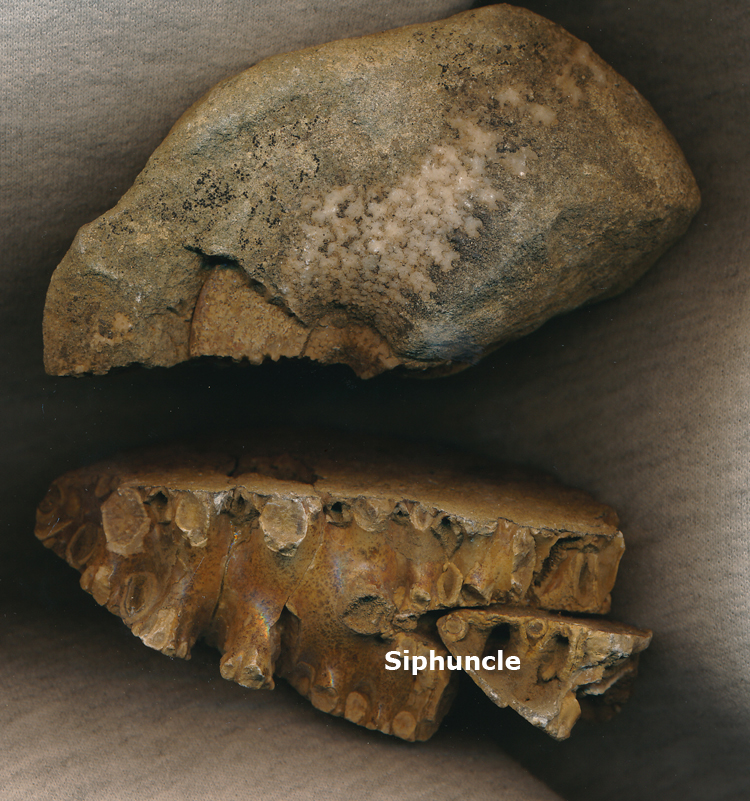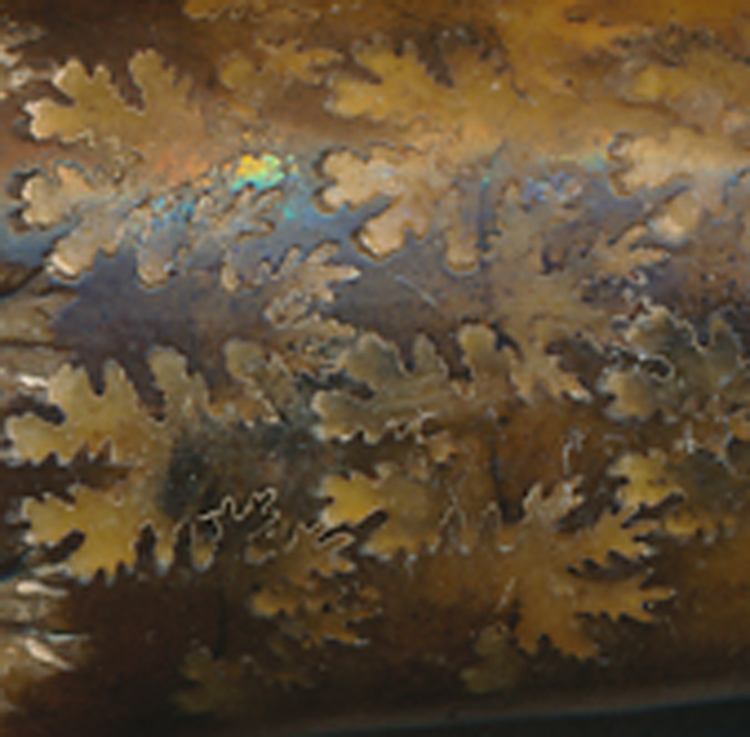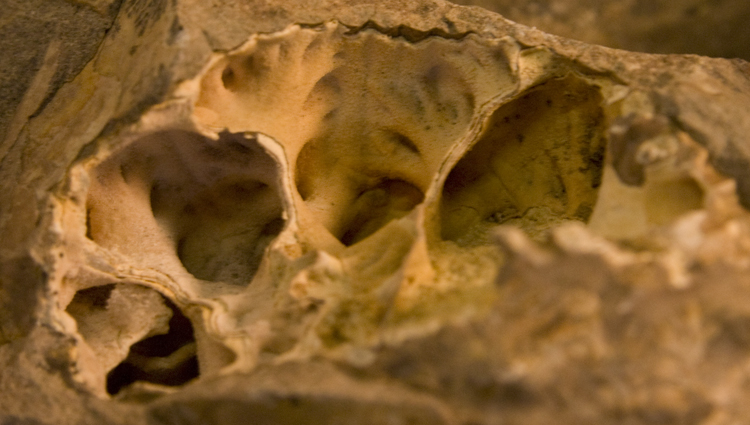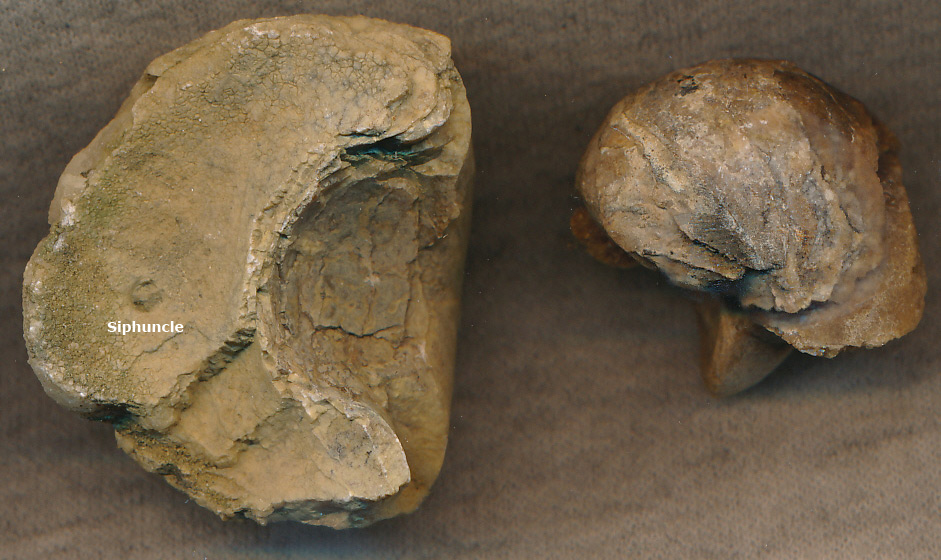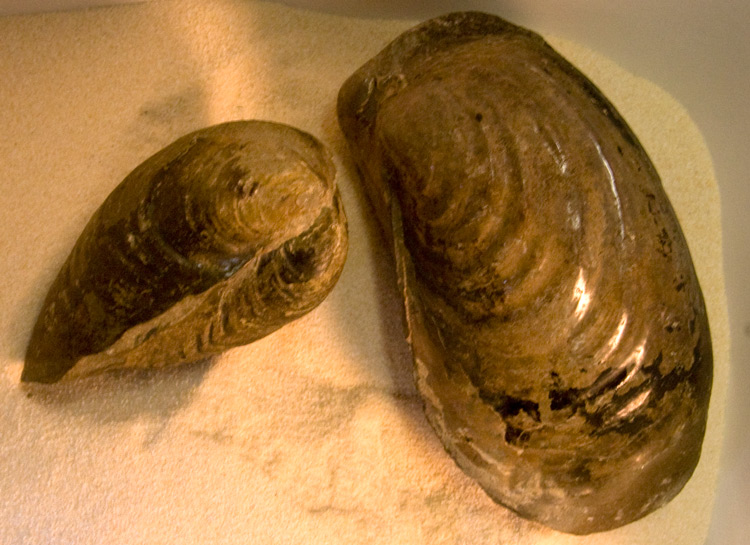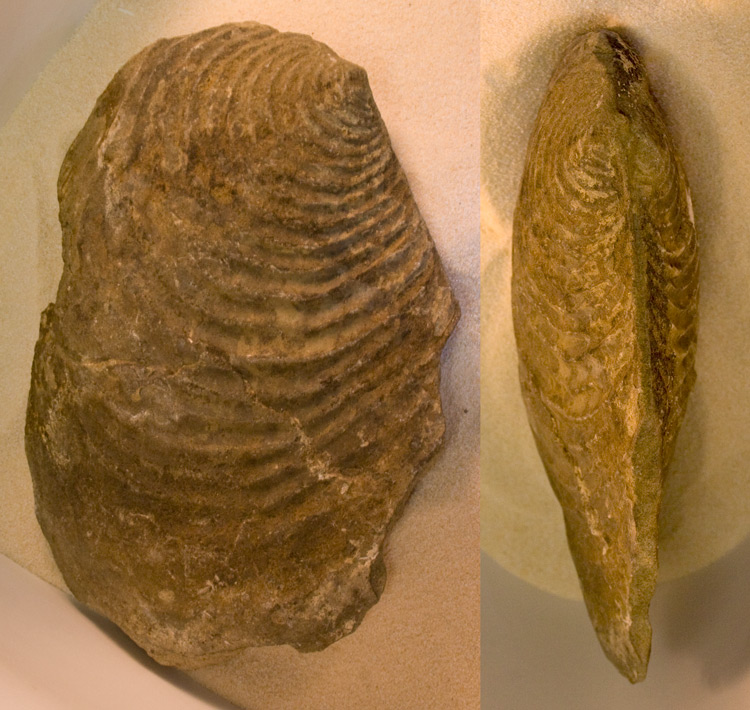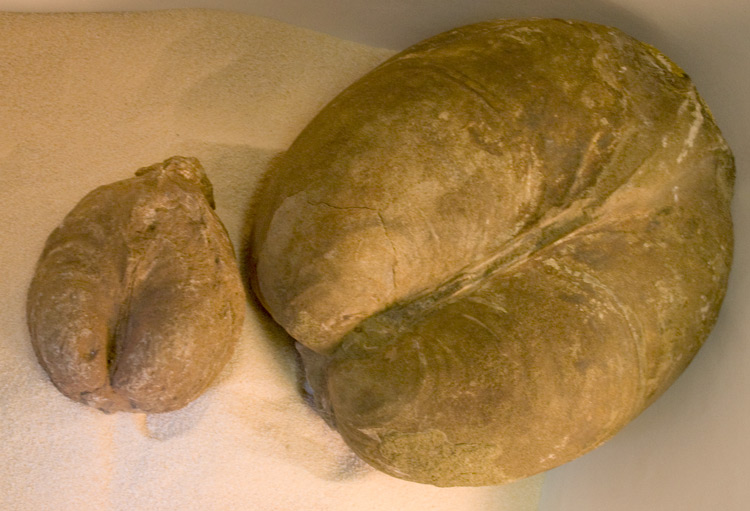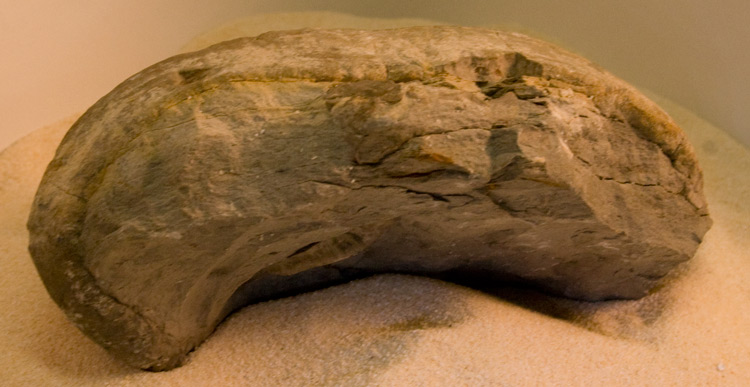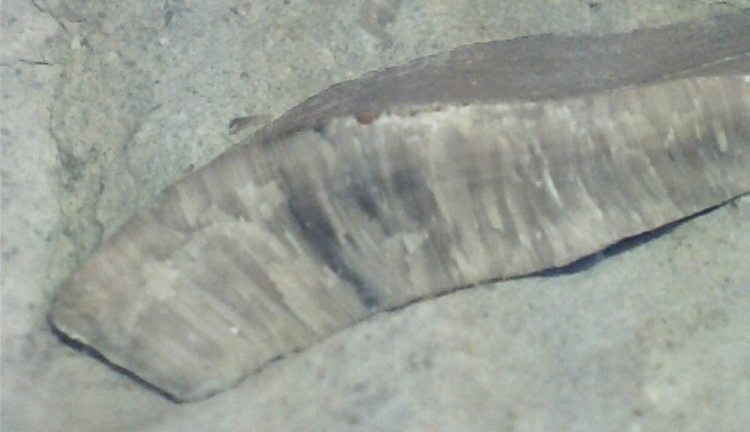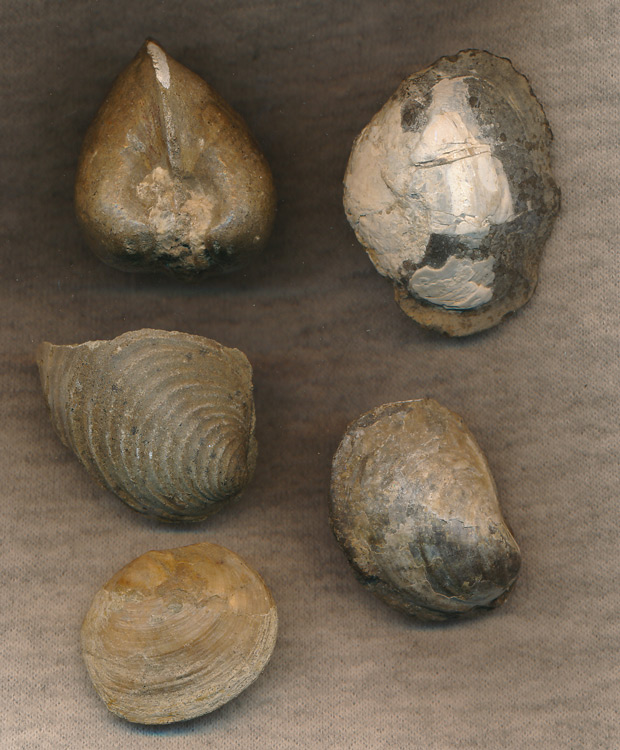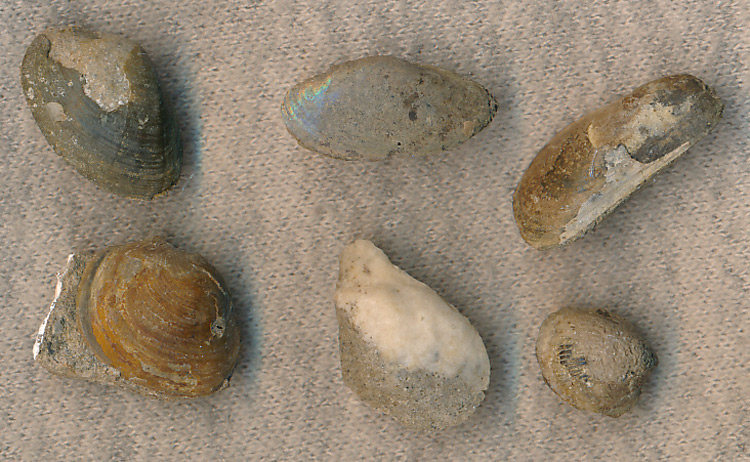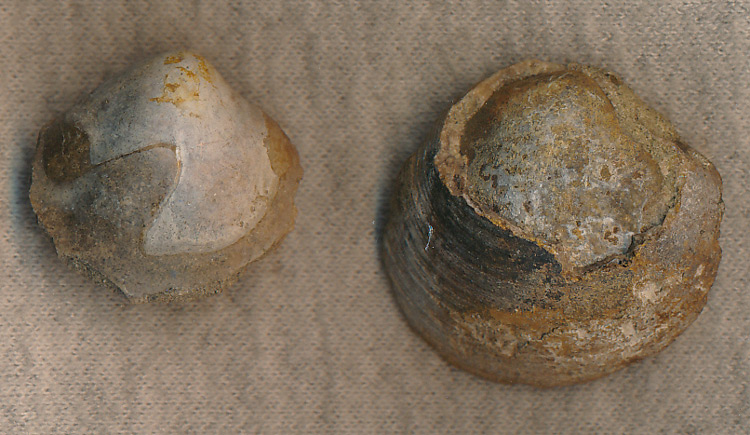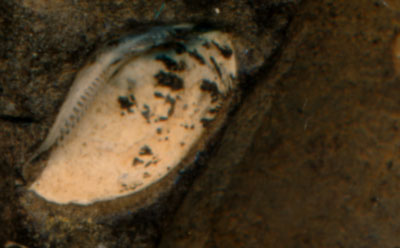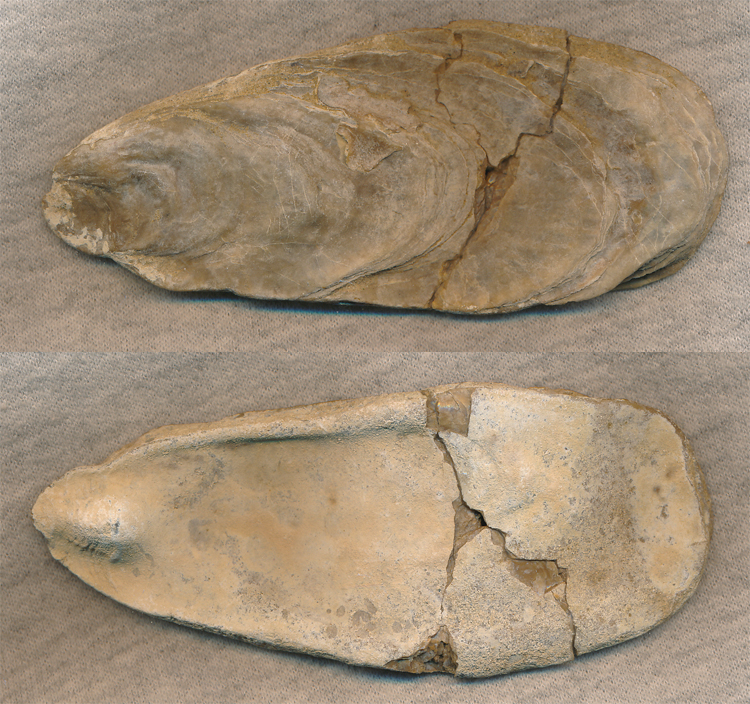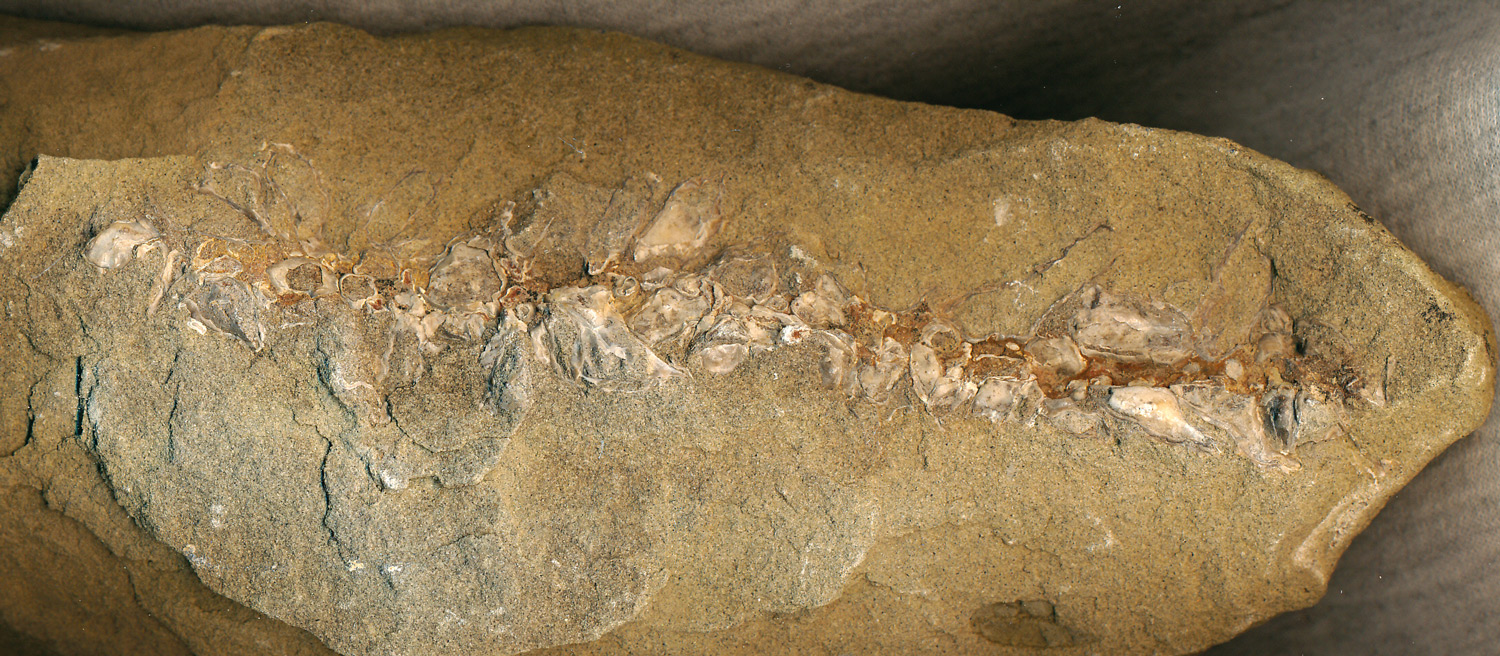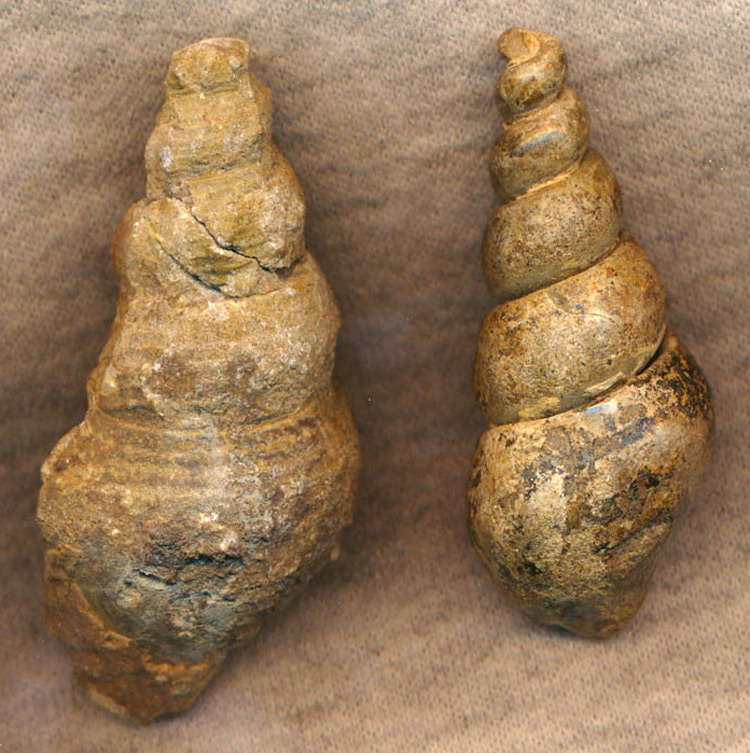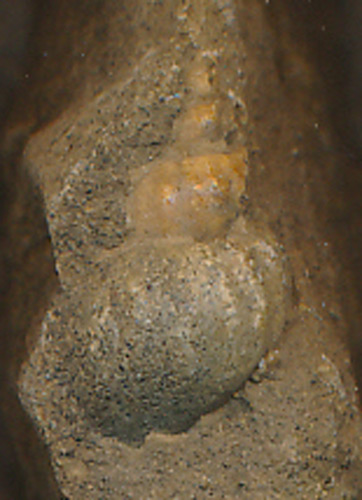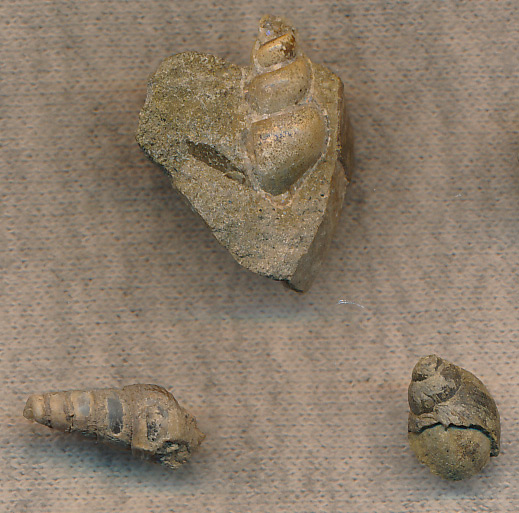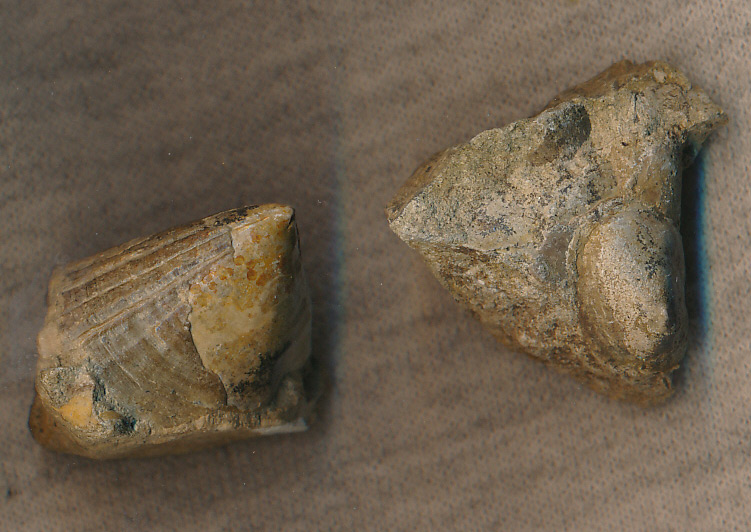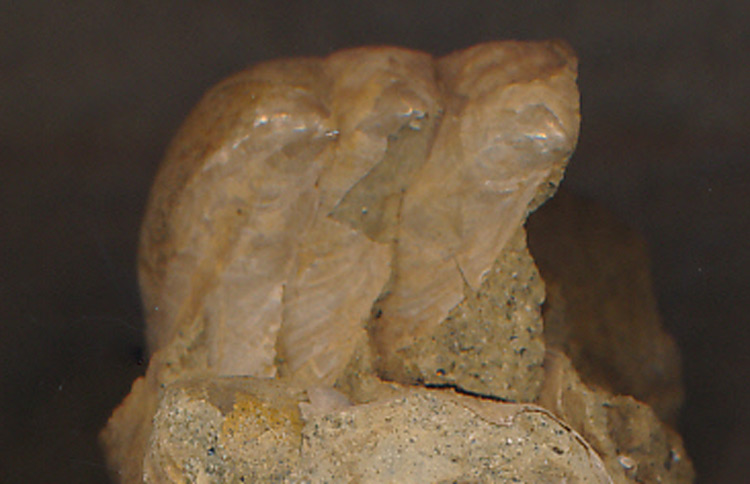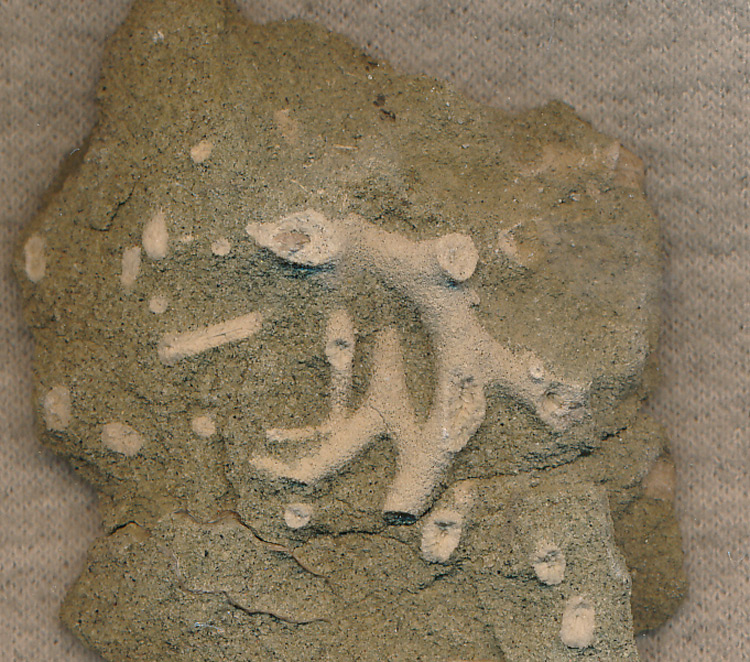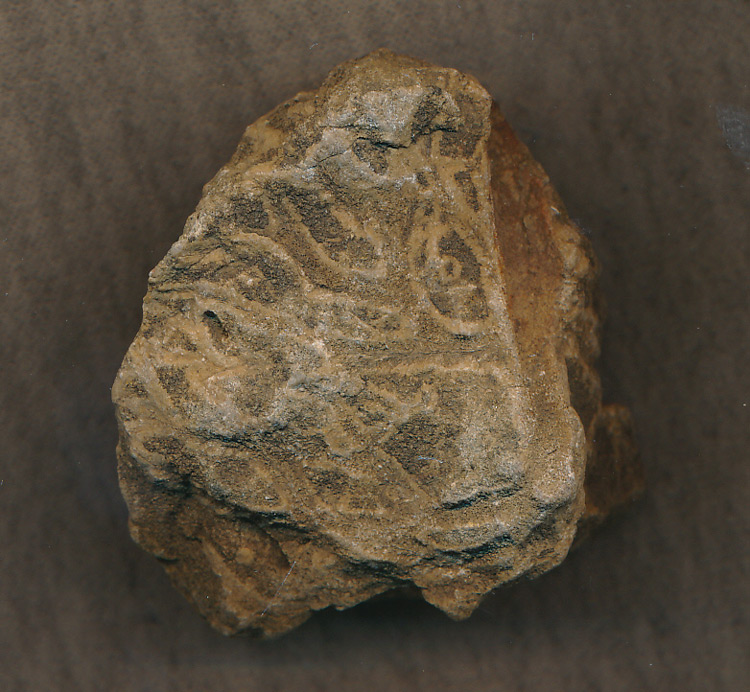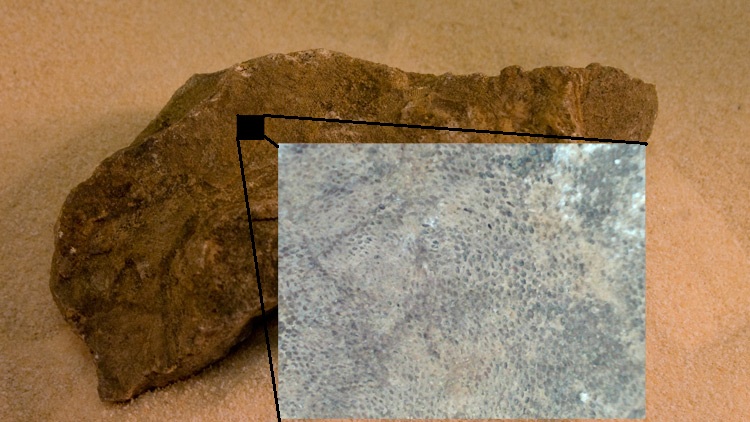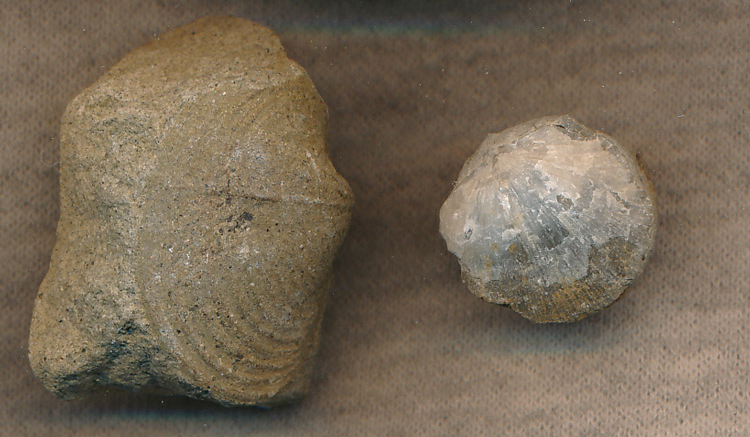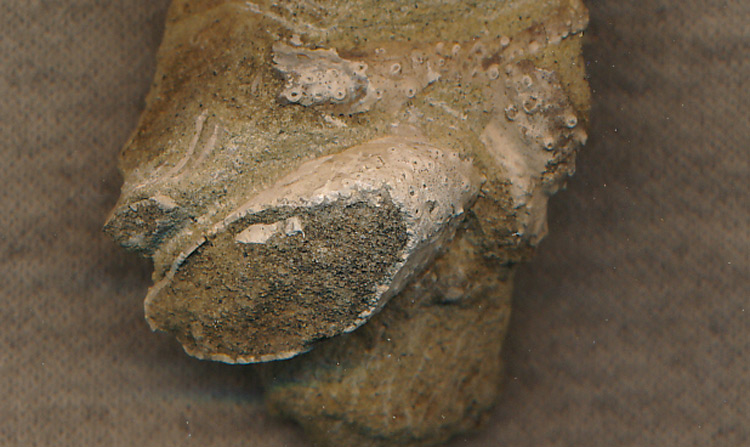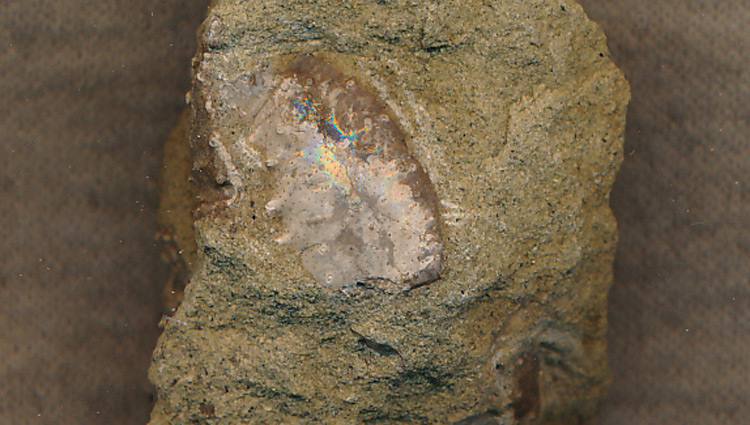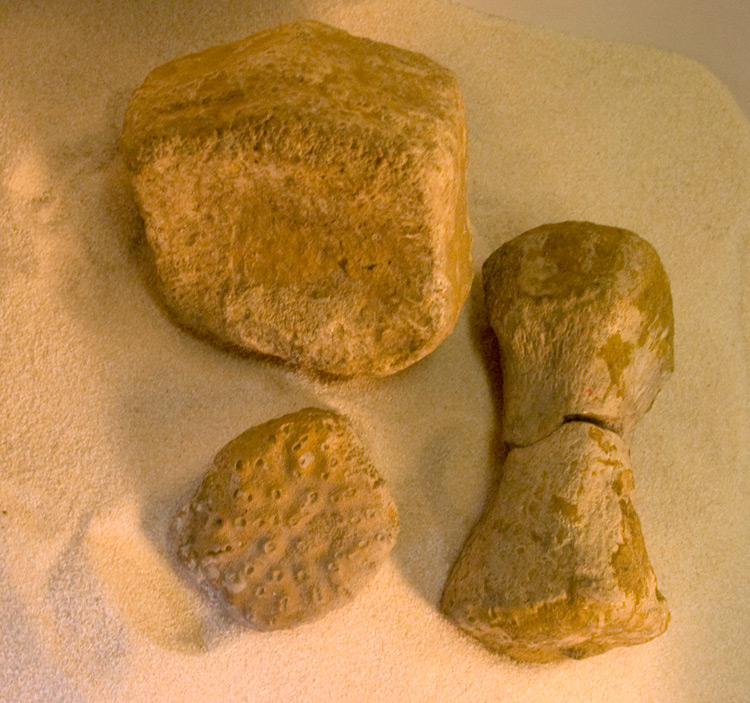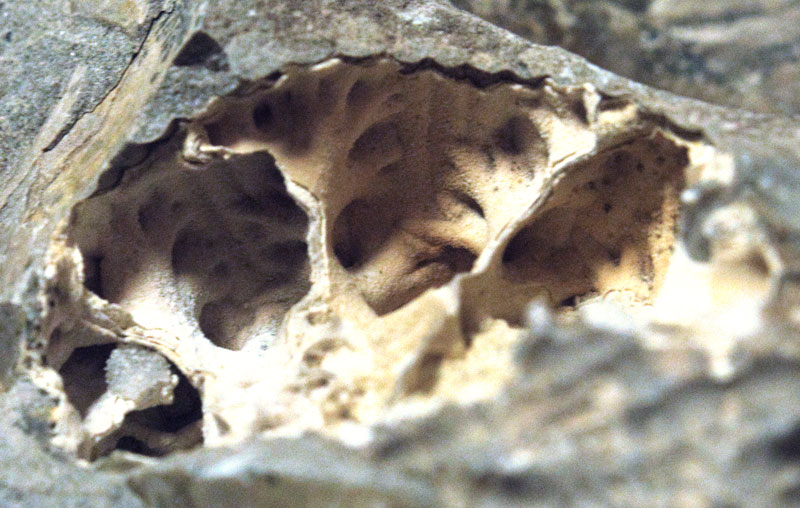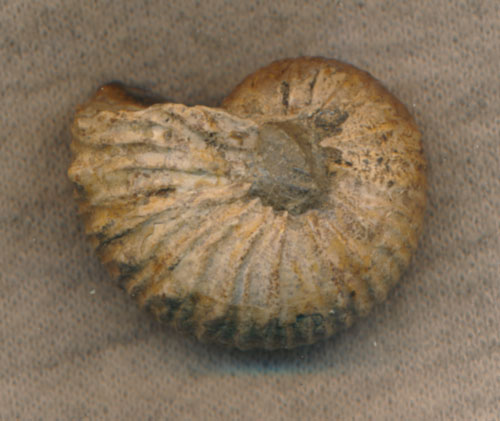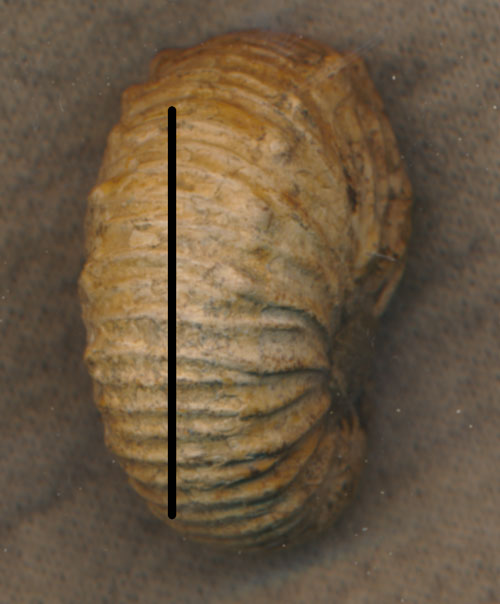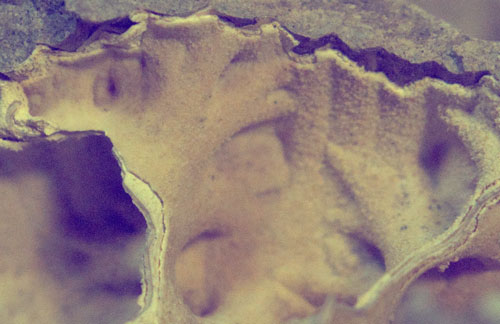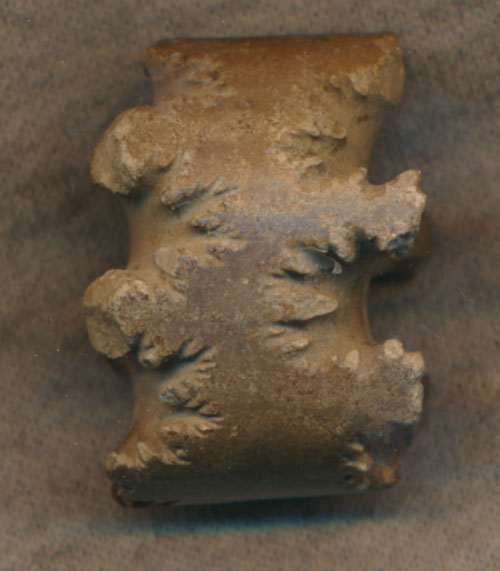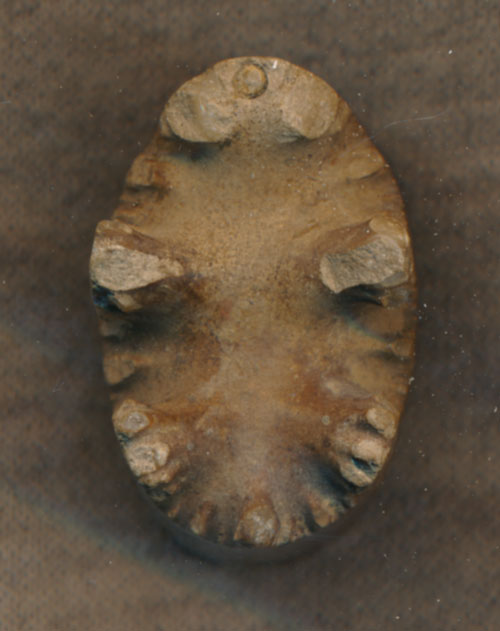A Discussion: Ammonite septa and chambers.
Ammonites are distinquished by the pattern created by the internal septa connection to the inside of the shell. These septa created hollow chambers in the shell of ammonites. As the complexity of this connection increased, the strength of the bond and overall strength of the shell increased, allowing for a lighter and, therefore, less costly shell for the animal to make. Ammonite shell, in general, are thinner and lighter than shell of gastropods or bivalves of similiar size.
Rarely are chambers preserved empty but are usually filling with sediment, minerals such as calcite deposited after the shell is buried, or collapsed.
Here is one instance in which the chambers did survive empty with the shell breaking approximately in half when excavated. The second image is the same species seen from the side and from the top with a line indicating the approximate position of the break in the first image.
The fourth image is an enlargement of the first showing the edge of the mold formed by the external shell, the parallel ridges that decorated the external shell, and the edges of the septa where they meet the external shell.
The fifth image show the edge of the septa where they meet the shell in a baculite specimen with calcite filled chambers.
The last two images are a single filled chamber that separated from the rest of the shell. Not the small circle at one side of the oval. That is the siphuncle, a tube that ran through each septa and chamber allowing the animal the change the bouyancy of the shell. |



